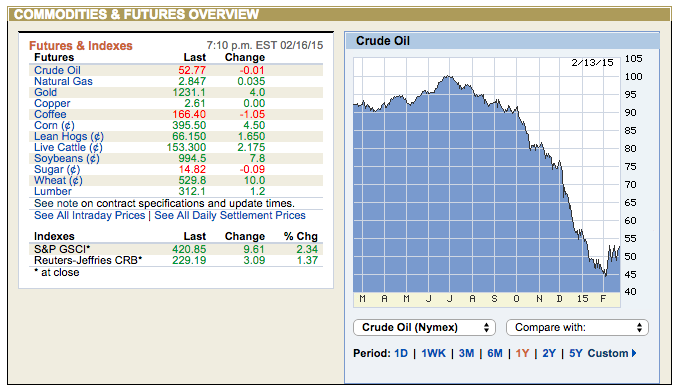Forward Contracts¶
Forward Contract Definition¶
Definition: A forward contract is an agreement to exchange an asset at a future date at a prespecified price.
- The contract settlement date is called the expiration date.
- The asset that is exchanged is called the underlying asset.
- The buyer holds the long position.
- The seller holds the short position.
- There is no initial payment or premium.
Delivery and Settlement¶
There are two types of forward contract settlements.
- Delivery: The long position pays the prespecified price to the short position, who delivers the asset.
- Cash settlement: The long and short positions pay the net cash value to the other.
Forward Example¶
Two parties contract to exchange a \(\smash{\$100}\) bond for \(\smash{\$98}\) at a future date.
- If the bond is worth \(\smash{\$98.25}\) at expiry, the short position pays \(\smash{\$0.25}\) to the long position at expiry.
- If the bond is worth \(\smash{\$97.50}\) at expiry, the long position pays \(\smash{\$0.50}\) to the short position at expiry.
- Cash-settled forwards are often called NDFs, or nondeliverable forwards.
- Usually, cash settlement is used for underlying assets that are difficult to exchange (think of a stock index).
Early Termination¶
Suppose one party in a forward contract wishes to terminate early.
- She could engage in another forward contract on the opposite side.
- Depending on market conditions, the new contract may be written at a new price.
Early Termination Example¶
Suppose a trader enters a long forward contract position to exchange a barrel of crude oil on 13 Feb 2015 and decides to terminate the contract on 16 Feb 2015.
- On 13 Feb, the forward price is $52.78 per barrel.
- On 16 Feb, the forward price is $52.73 per barrel.
- She can write a forward contract for $52.73 on 16 Feb.
- Note that she takes a $0.05 loss and is still exposed to risk of default on two different contracts.
- Alternatively, she can ask her original counterparty to accept the present value of $0.05 to terminate.
Notation¶
We will use the following notation:
- \(\smash{S_0}\): Spot price of the underlying asset today.
- \(\smash{F_0}\): Forward price of the underlying asset today.
- \(\smash{T}\): Time until delivery.
- \(\smash{r}\): Risk-free rate of interest for maturity \(\smash{T}\).
Note that any units (minutes, hours, days, weeks, months, years) may be used for \(\smash{T}\), but that the interest rate, \(\smash{r}\), must be adjusted accordingly.
Forward Valuation¶
The price of a forward contract with maturity \(\smash{T}\) for an asset with price \(\smash{S_0}\) is:
- \(\smash{r}\) is the risk-free interest rate over period \(\smash{T}\).
- If \(\smash{r}\) is constant, \(\smash{F_0}\) is a deterministic function of the spot sprice, and has nothing to do with the unknown, future price of the asset.
- \(\smash{e^{rT}}\) is known as the basis.
- Intuition: the foward holder must pay the holder of the spot contract for interest that would have been earned.
Forward Valuation Example¶
Suppose you would like to purchase a 3-month forward contract on Coca-Cola (KO) stock on 1 Mar 2016. What is the value of the forward (assuming the stock never pays dividends)?
- Set \(\smash{T = 0.25}\) (i.e. time units of 1 year).
- Use Yahoo Finance to determine \(\smash{S_0 = \$43.35}\).
- Use Quandl to determine the (annualized) yield on the 3-month U.S. Treasury Bill: \(\smash{r = 0.0033}\).
Thus,
Forward Valuation with Income¶
Suppose the underlying asset provides income with present value \(\smash{I}\).
- This may be a single payment or a stream of payments, all appropriately discounted:
- This assumes \(\smash{m}\) equally spaced payments of equal size during interval \(\smash{T}\).
The value of a forward contract is now:
Forward Valuation with Yield¶
Suppose the underlying asset provides income yield (continuously compounded) \(\smash{q}\). Then:
- Intuition: the holder of the spot contract now pays interest (implicitly), but earns income. The foward holder must compensate the spot holder for interest, net of income earned over period \(\smash{T}\).
Forward Valuation with Yield Example¶
Reconsider the previous example for Coca-Cola stock.
- Now assume that KO has an annualized dividend yield of 3%.
The forward price is
Forward Valuation for Currency¶
Suppose the underlying asset is a currency, and that the risk-free interest rate in the foreign market is \(\smash{r_f}\). Then:
- The foreign interest is income and the rate is the income yield.
Curreny Forward Example¶
What is the value of a 6-month forward contract for Canadian dollars (CAD) on 1 Mar 2016?
- Set \(\smash{T = 0.5}\) (i.e. time units of 1 year).
- Use Quandl to determine the spot exchange rate for USD/CAD: \(\smash{S_0 = \$1.34}\).
- Use Quandl to determine the (annualized) yield on the 3-month Canadian Treasury Bill: \(\smash{r_f = 0.0047}\). We already determined that \(\smash{r = 0.0033}\).
Thus,
Forward Valuation for Commodities¶
Suppose that the underlying is a physical asset that must be stored. Then:
or
- \(\smash{U}\) is the present value of storage costs.
- \(\smash{u}\) is the annual storage cost expressed as a fraction of commodity value.
- Note that storage costs are like negative income.
Cost of Carry¶
The foregoing compounding rates are referred to as the cost of carry, \(\smash{c}\).
- The cost of carry includes interest rate and storage costs, minus income.
- For a stock index that pays a dividend yield, \(\smash{c = r-q}\).
- For a foreign currency, \(\smash{c = r - r_f}\).
- For a commodity that provides income, \(\smash{c = r - q + u}\).
